 by our College Data Analytics Team
by our College Data Analytics TeamMGH Institute of Health Professions total enrollment is approximately 1,269 students. 170 are undergraduates and 811 are graduate students.
Male/Female Breakdown of Undergraduates
The full-time MGH Institute of Health Professions undergraduate population is made up of 87% women, and 13% men.
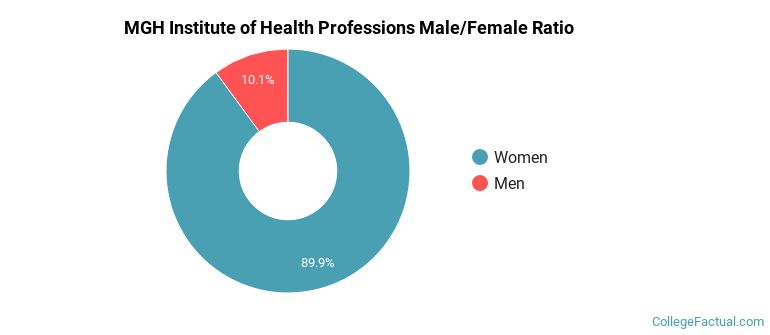
For the gender breakdown for all students, go here.
MGH Institute of Health Professions Racial/Ethnic Breakdown of Undergraduates

| Race/Ethnicity | Number |
|---|---|
| White | 121 |
| Asian | 22 |
| Black or African American | 12 |
| Hispanic | 8 |
| Multi-Ethnic | 5 |
| Unknown | 2 |
| Native Hawaiian or Pacific Islander | 0 |
| International | 0 |
See racial/ethnic breakdown for all students.
Male/Female Breakdown of Graduate Students
About 84% of full-time grad students are women, and 16% men.
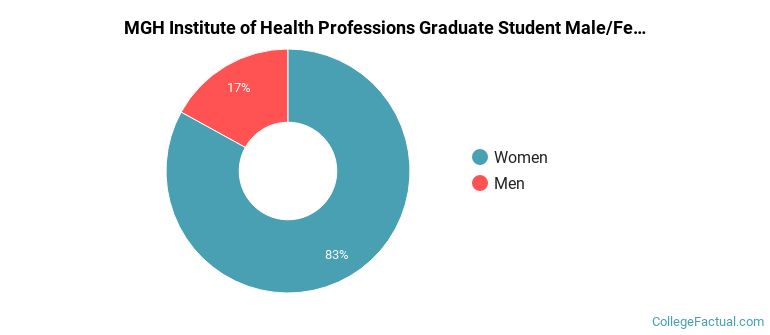
For the gender breakdown for all students, go here.
MGH Institute of Health Professions Racial-Ethnic Breakdown of Graduate Students
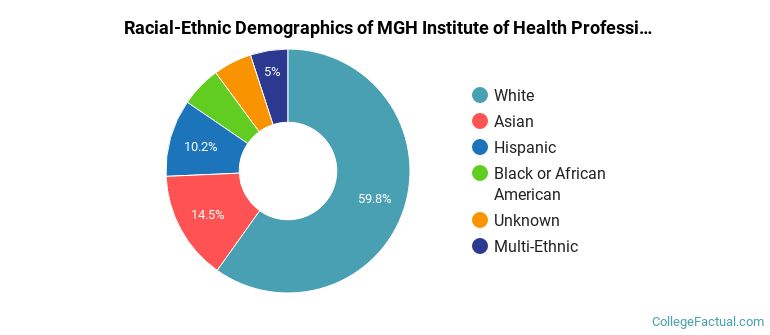
| Race/Ethnicity | Number |
|---|---|
| White | 512 |
| Asian | 112 |
| Hispanic | 70 |
| Black or African American | 52 |
| Multi-Ethnic | 38 |
| Unknown | 27 |
| Native Hawaiian or Pacific Islander | 0 |
| International | 0 |
See racial/ethnic breakdown for all students.
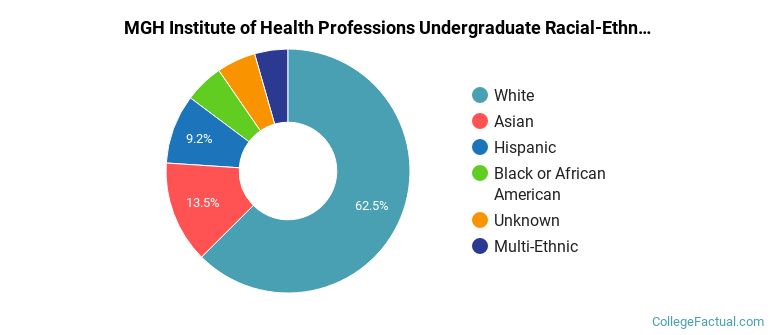
| Race/Ethnicity | Number |
|---|---|
| White | 792 |
| Asian | 174 |
| Hispanic | 101 |
| Black or African American | 84 |
| Unknown | 64 |
| Multi-Ethnic | 53 |
| Native Hawaiian or Pacific Islander | 0 |
| International | 0 |

There are approximately 1,055 female students and 214 male students at MGH Institute of Health Professions.
A traditional college student is defined as being between the ages of 18-21. At MGH Institute of Health Professions, 0.91% of students fall into that category, compared to the national average of 60%.
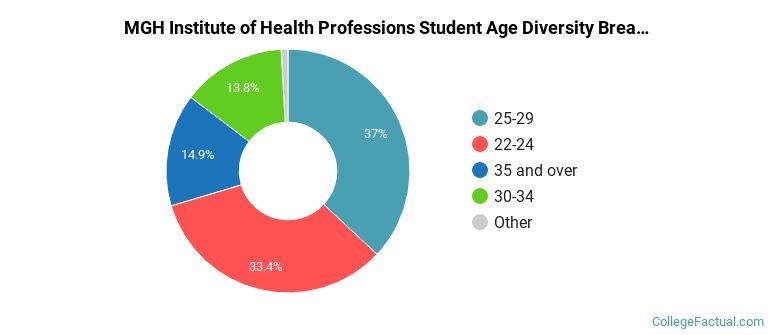
| Student Age Group | Amount |
|---|---|
| 25-29 | 448 |
| 22-24 | 405 |
| 35 and over | 181 |
| 30-34 | 167 |
| 20-21 | 11 |
| 18-19 | 0 |
| Under 18 | 0 |
Footnotes
*The racial-ethnic minorities count is calculated by taking the total number of students and subtracting white students, international students, and students whose race/ethnicity was unknown. This number is then divided by the total number of students at the school to obtain the racial-ethnic minorities percentage.
References
Department of Homeland Security Citizenship and Immigration Services
Learn more about how College Factual creates their Diversity Rankings.